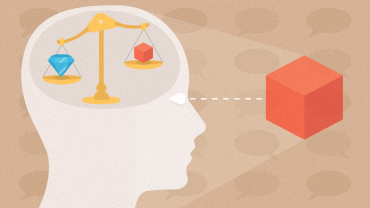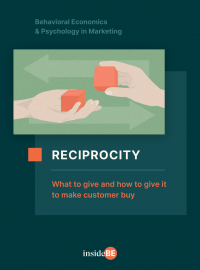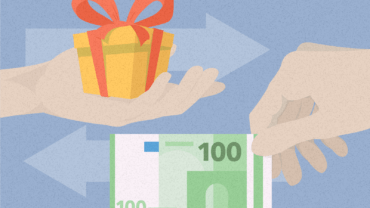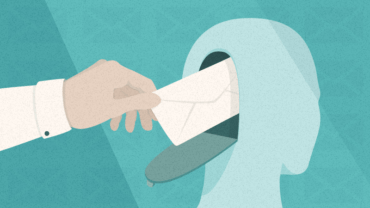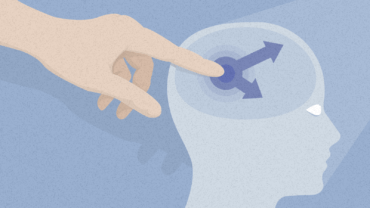How to Create a Habit-Forming Business
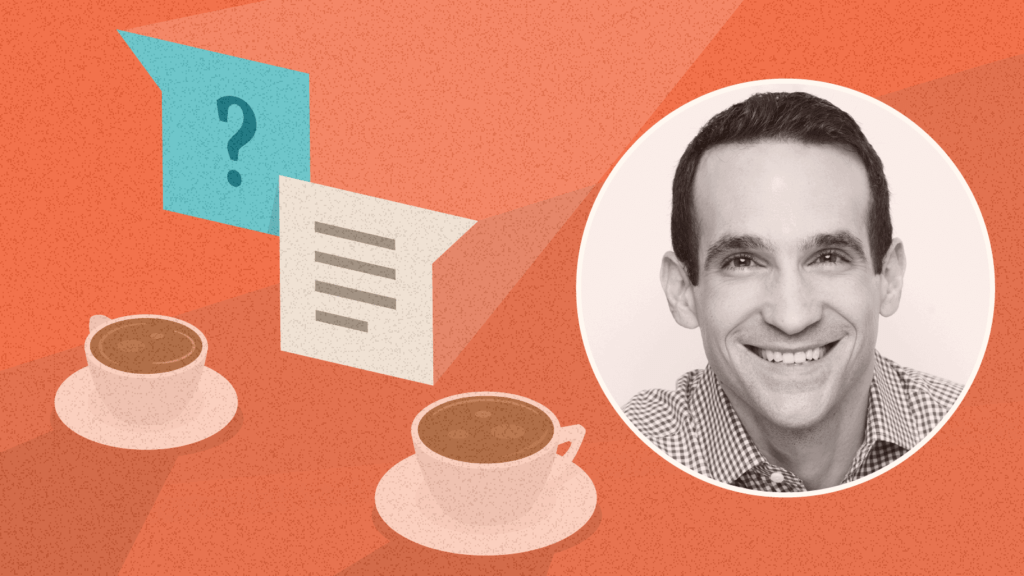
How can you create a business that becomes a habit for your customers and ensures that they keep coming back for more? Nir Eyal, author of the best-selling book, Hooked: How to Build Habit-Forming Products, explains the process that will generate success.
In this exclusive interview, you’ll discover:
- The best time to use behavioral economics in your business;
- How all companies can utilize ‘user’ interaction to improve their products and services;
- The unusual yet effective method some US states are using to encourage people to get the COVID vaccine; and
- What to focus on if your product doesn’t require repeated use.
What place should behavioural economics have in marketing and design?
When it comes to what drives human behavior, there are many models we can use to understand it and its influences. Some of our models are perfectly good at predicting behavior. Like incentives, for example, which is perhaps one of the best models for this. Classical economics tells us that when there’s some kind of financial incentive or way to maximize utility, people tend to behave just as we predicted. So it doesn’t mean we should throw out that model.

Discover ground-breaking ideas and fascinating solutions.
Sometimes there are exceptions to the rule, though. Classical economics, for instance, teaches us that people will buy more of something as the price goes down. Yet, there are some products where that’s not the case. Sometimes if the product price goes up — like a luxury good, for example, which is seen as more valuable — people will still buy more of it. It’s kinda weird, but it does happen.
There are exceptions to classical economics rules. Sometimes if the product price goes up, it is seen as more valuable and people will buy more of it.
So, perhaps where behavioral economics is helpful is in the exceptions that oftentimes make the rule for certain products and certain industries. So I don’t think it should be overweighted. I think it should be appropriately weighted that sometimes behavioral economics provides the only solution to a problem under certain constraints.
Why is behavioural economics important?
I wouldn’t say it’s just behavioral economics. I would expand that aperture to include behavioral design. Behavioral design is looking at the application of consumer psychology and behavioral economics to design a user behavior. Many times I think the best time to look at a behavioral design solution is when money is extremely tight.
We always know that we can change consumer behavior through economic means, such as running a coupon, discount, or some kind of promotion. This is pretty much the oldest trick in the book. But sometimes there are behaviors that are way too expensive to change. And in those cases, incentivizing people with straight-up discounts just doesn’t work.
I think a great example of what we face today is getting people to take the COVID vaccine. It would certainly work if we paid everybody to go and get the jab, but this would be very expensive. However, it turns out that there are many other ways governments can incentivize the vaccine, ones you’d least expect to work that can actually be highly effective.
This includes the lottery. In the US, several jurisdictions have said that if you come to get the vaccine, you’ll automatically be entered into a lottery pool. And if you’re picked from this pool, you’ll win a million dollars. I think it’s incredibly effective and very penny-wise. I have to say, you wouldn’t expect it to work, but it’s much more cost-efficient than paying every single person.
Increasing user ability is almost always more effective than increasing motivation. I think the standard marketing modus operandi is “throw more money at advertising and that’ll make people want our product more.” But it turns out that it’s much more effective to make the product easier to consume and easier to use.
Increasing user ability is almost always more effective than increasing motivation. Instead of spending on advertising, it turns out that it's much more effective to make the product easier to consume and easier to use.
This will actually give you much more bang for your buck. Because you can actually get a disproportionate return on your investment by designing a product in such a way that it can be used more easily and accessibly rather than by increasing motivation. And it doesn’t matter if the product is from a small business or a big brand.
What happens if psychology isn’t taken seriously?
We usually default to the standard solutions; I think we just tend to waste a lot of money. The problem is that you can always design for growth. You can always buy growth. So when standard marketing precepts are followed, like increasing brand exposure, it’s really to drive the growth of a product and the market share. And that model definitely works.
The problem is you can't buy engagement. You can buy growth, but you can't buy engagement.
The problem is you can’t buy engagement. You can buy growth, but you can’t buy engagement. So you can go and dump truckloads of money on Facebook or Google, television stations, or radio stations and get your message out there, but it’s going to cost you a lot. Because engagement can’t be bought. And so, if you don’t design engagement into the product, what you tend to get is what we like to call a leaky bucket.
A leaky bucket is a business where people come in at the top of a funnel only to leak out at the bottom, and that’s why you always want to make sure you design for engagement before growth.
I see it all the time. Companies get some kind of viral growth engine or some kind of viral growth loop, or maybe they spend a bunch of money on advertising, and they think they’ve made it big. But if people don’t stick around, you’ve just wasted all that money. And so that’s why you see this renewed focus in what I do in terms of my work on habits. If you ignore the retention part, you’ll have a leaky bucket.
How should product designers go about using the “hook model” when designing digital products?
That’s what the primary application of the hook model is for, it tends to be not exclusive but rather for digital products. Not that you need to have a digital product in order to use the hook. It’s just that it’s very difficult to get feedback into the loop. A critical step is the investment phase of the hook model — the fourth step of the hook — which is where the user puts something into the product. So if it’s not an interactive product, there’s no way to improve the product with use.
A critical step is the investment phase of the hook model — the fourth step of the hook — which is where the user puts something into the product.
There are some exceptions. I tend to go back to the same barber. I didn’t do that earlier, though. I would usually hop around from one barber to the next. That is, until I met my current barber who always remembers my name. He even remembers my kid’s name and what I do for a living. Most importantly, he remembers how I like my hair.
And so what he’s done is he’s invested in the relationship by improving the service with use. So every time I tell him something, he incorporates that into his memory banks and makes the experience better every time I see him.
And that’s what companies have to do, whether it be online or offline. If online, then there’s really no excuse because you don’t have to rely on people’s brains. You can rely on databases. And so there’s really no excuse if your business touches the internet — and today, frankly, what business doesn’t touch the internet — you really are missing an opportunity if you’re not improving the product with use. Form products that incorporate user investment to improve.
What can product designers not building products for everyday use learn from the hook model?
The hook model is really meant for products that are used with sufficient frequency to form a habit. So it’s really for products that are used at least within a week’s time or less. Now, if your product is not something that is utilized within a week’s time or less, then you don’t necessarily need it to become a habit. The problem is if you don’t have a habit, you better have some kind of competitive advantage, something that Warren Buffett calls a moat around your business.
And that can be economies of scale. It can be a brand. Or it could be intellectual property. But it has to be something. And of course, a habit is a huge competitive advantage. So it’s not that every company needs to be habit-forming, it’s that every company that needs to be habit-forming needs to have a hook. So it’s only those types of companies that that book is written for.
It's not that every company needs to be habit-forming, it's that every company that needs to be habit-forming needs to have a hook.
Now, that being said, your product might not be one that requires repeated use, like car insurance, for example. You don’t use car insurance, you buy it, and you don’t use it unless God forbid something terrible happens. So you don’t necessarily need to form a habit around that. So you better build some kind of competitive advantage, or else the competition is going to swoop in and take your customers away by offering a better price and features.
But what you can learn from the hook model is that you can use it piecemeal. You can still build effective triggers and make the action as easy as possible. Use the reward phase, keep the rewards variable, and ask for user investment. You can use all four of those tactics. You just don’t have to have all of them. Whereas a habit-forming product has to use all four.
Key Takeaways:
- One of the best times to use behavioural economics and design is when money is tight. We know that money can be used to change behaviours through advertising and marketing. However, behavioral economics is effective in situations where there isn’t the money to do this.
- You must build your product with engagement in mind. You can buy growth, but you’ll lose customers if people don’t stay around. So, it’s important to consider engagement to increase customer retention.
- Improve your product with repeated customer use. Your aim should be to make the customer experience better with use. This is a must-do with online products or services; however, you can improve the customer experience with physical services. A good barber will remember your name, your work, and ask you how your children are doing. Consider what you know about your customers and how they use your product or service so you can improve it for them.
- If your business isn’t a habit-forming one, build effective triggers and make the action as easy as possible. Use the reward phase, keep the rewards variable, and ask for user investment. Consider how easy it is to book an appointment with you. What reward can you give customers for completing the desired action?

